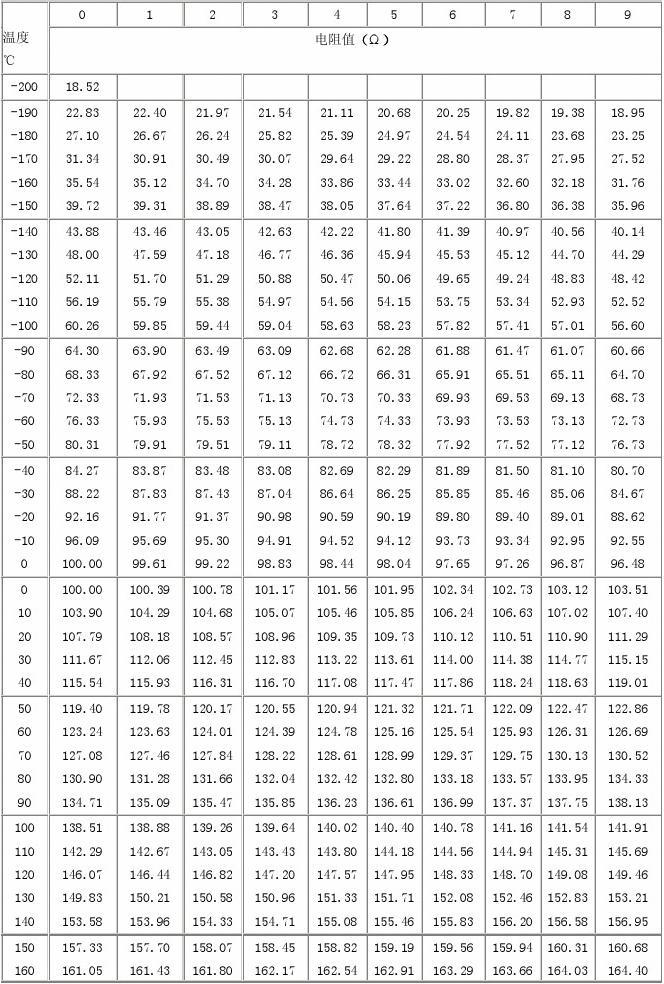pt100 temperature sensor|pt100 specification is an instrument that converts temperature variables into standardized output signals that can be transmitted. PT100 platinum thermal resistance temperature sensor is the most commonly used temperature detector in the medium and low temperature area. Its main features are high measurement accuracy and stable performance. Among them, the measurement accuracy of platinum thermal resistance is the highest. It is not only widely used in industrial temperature measurement, but also made into a standard reference instrument.
pt100 temperature sensor|pt100 specification principle
Pt100 is a platinum thermal resistance, its resistance is proportional to the change of temperature. The relationship between the resistance value of PT100 and the temperature change is: when the temperature of PT100 is 0°C, its resistance value is 100 ohms, and its resistance value is about 138.5 ohms at 100°C. Its industrial principle: when the PT100 is at 0 degrees Celsius, its resistance value is 100 ohms, and its resistance value will increase at a uniform rate as the temperature rises.
pt100 temperature sensor|pt100 specification Scope of application
High-precision temperature equipment such as medical, electrical, industrial, temperature calculation, resistance calculation, etc., has a very wide range of applications.
pt100 temperature sensor|pt100 specification Lead way
Thermal resistance is a primary element that converts temperature changes into resistance changes. It is usually necessary to transmit the resistance signal to a computer control device or other primary instrument through a lead wire. Industrial thermal resistance is installed at the production site, and there is a certain distance between it and the control room, so the lead of the thermal resistance will have a greater impact on the measurement results.
There are three main ways to lead the national standard thermal resistance:
Two-wire system: the method of connecting a wire at both ends of the thermal resistance to lead out the resistance signal is called the two-wire system: this kind of lead method is very simple, but there must be lead resistance r in the connecting wire, and the size of r depends on the material and length of the wire. Factors are related, so this lead method is only suitable for occasions with low measurement accuracy.
Three-wire system: The method of connecting one lead at one end of the root of the thermal resistance and connecting two leads at the other end is called three-wire system. This method is usually used in conjunction with a bridge, which can better eliminate the influence of lead resistance. It is industrial The most commonly used lead resistance in process control.
Four-wire system: The method of connecting two wires at each end of the thermal resistance is called a four-wire system, in which two leads provide a constant current I for the thermal resistance, convert R into a voltage signal U, and then pass the other two leads Lead U to the secondary meter. It can be seen that this lead method can completely eliminate the influence of lead resistance and is mainly used for high-precision temperature detection.
The thermal resistance adopts three-wire connection. The three-wire system is used to eliminate the measurement error caused by the resistance of the connecting wire. This is because the circuit for measuring thermal resistance is generally an unbalanced bridge. The thermal resistance is a bridge arm resistance of the electric bridge, and its connecting wire (from the thermal resistance to the control room) also becomes a part of the bridge arm resistance. This part of the resistance is unknown and changes with the ambient temperature, causing measurement errors. Using a three-wire system, one wire is connected to the power terminal of the bridge, and the other two are respectively connected to the bridge arm where the thermal resistance is located and the adjacent bridge arm, which eliminates the measurement error caused by the wire line resistance. Three-wire connection is generally used in industry.
pt100 thermal resistance indexing table

pt100 temperature sensor|pt100 specification temperature sensing components include ceramic components, glass components, and mica components. They are made of platinum wires wound on the ceramic framework, glass framework, and mica framework respectively, and then processed by complex processes. The PT100 temperature transmitter is installed in the Pt100 platinum resistance junction box to convert the resistance signal of the thermal resistance Pt100 into a two-wire 4-20mA output device.